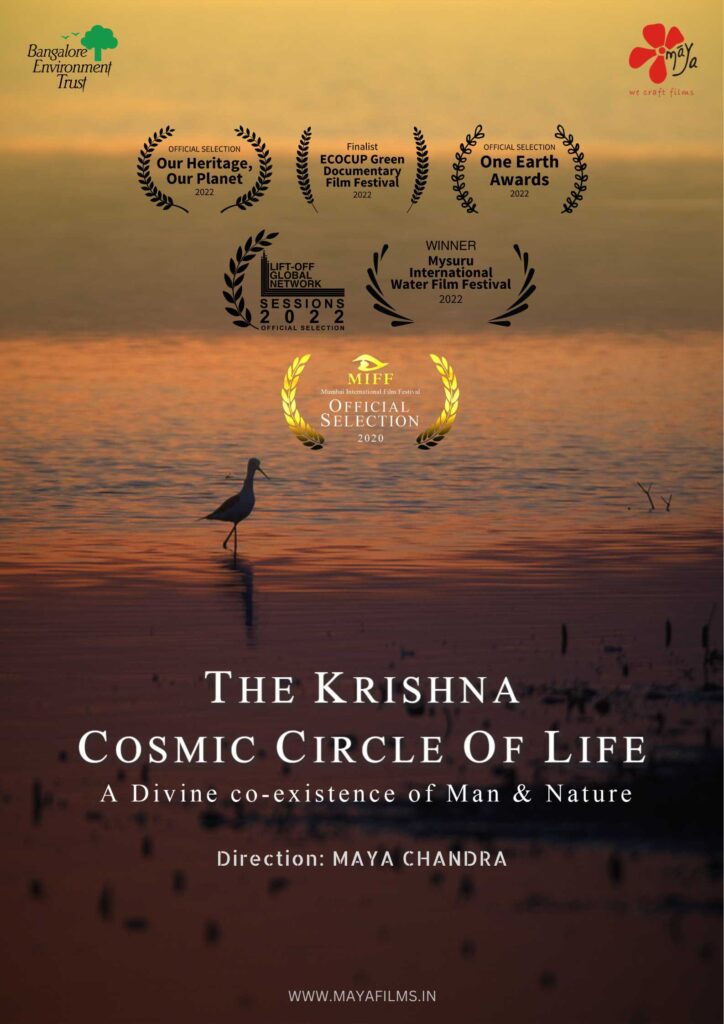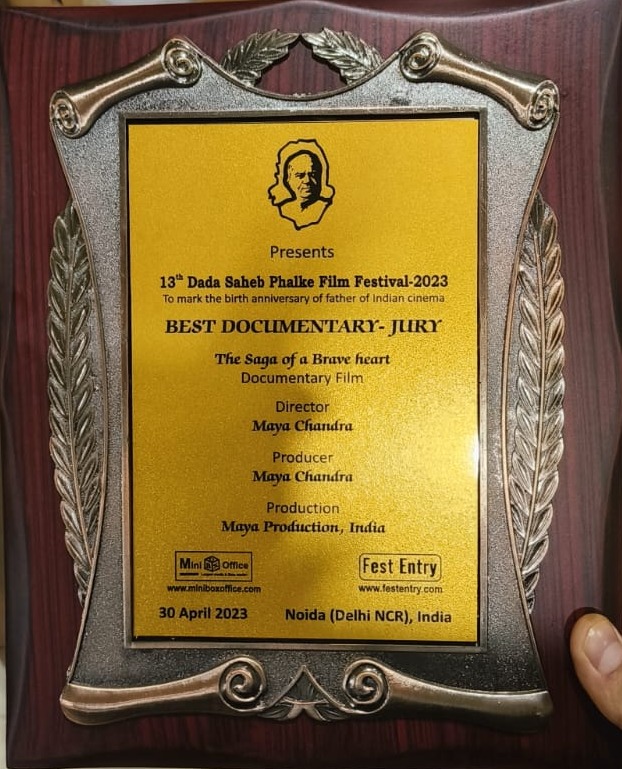Saga of a Braveheart 60+ Screenings
MAYA Films proudly celebrates the grand 75th screening of their...


By Suraksha Poojari | 09 October 2023
In a world that seems to spin ever faster, where the digital age continually reshapes our perceptions, and where the tapestry of human existence is woven with threads of change, documentary films stand as both witnesses and architects of our evolving reality. As the acclaimed filmmaker Ken Burns once noted “In a world where every aspect of our lives is constantly changing, documentaries are a reflection of our shared human experiences, a record of our times, and a bridge between cultures and generations.”
Evolution of Documentary films: UNDERSTANDING THE TONES OF AVANT-GARDE DOCUMENTARY FILMS
Documentary filmmaking has, without a doubt, undergone a remarkable transformation over the years. The techniques and technology used to capture and convey the human story have evolved significantly. Yet, at the core of this ever-changing process is a profound and enduring commitment to capturing the essence of our existence, of who we are and what we aspire to be. It is a journey that explores the understanding of societies, the depths of human emotions, and the breadth of our shared history.
This journey of making documentaries is marked by its resilience and adaptability, it bears witness to the constant shifting of the world. It mirrors the moment of triumph and tragedy, records the voices of those whose stories deserve to be heard, and creates a bridge between generations, cultures and diverse human experiences, Using a few of the documentaries as an example, we will embark on an exploration of how documentary films have transformed, adapting to the ever-evolving landscape of storytelling, technology and society. Through this lens, we will uncover how these powerful visual narratives continue to be guiding light, illuminating our collective path.
The Documentary, “Saga of a Braveheart,” falls into the category of a biographical documentary, which specifically focuses on the life and experiences of a particular individual. In this case, it tells the story of “Lieutenant Colonel Ajit V Bhandarkar”, who made the ultimate sacrifice on the battlefield in 1999. This type of documentary typically delves deep into the subject’s life and legacy, providing a comprehensive and often emotionally charged exploration.
Elements commonly found in a Biographical documentary like “Saga of a Braveheart” Include:
The documentary firmly brings in the theme of death, and emotions surrounding the same. It portrays the essence of human experiences, capturing shared experiences, feelings and connections. In the case of “Saga of a Braveheart,” the avant-garde techniques are used to create a unique and emotionally resonant exploration of the individual’s life, serving as a bridge between generations and cultures.
The documentary “Huts of Harmony” falls into the category of a “Social and Educational Development Documentary.” This type of documentary focuses on the efforts of organizations, like Seva Mandira and Abbhi Trust, that are dedicated to social development, empowerment, and educational initiatives in underprivileged or remote areas. These documentaries often aim to shed light on the positive impact such organizations have on individuals, families and communities.
Key elements commonly found in social and educational development documentaries like this include:
In the case of “Huts of Harmony,” explores the work of Seva Mandira and Abbhi Trust, which are inspired by the principles of Sri Ramakrishna and Swami Vivekananda’s concept of Hut Temples and the importance of education in remote areas, By using narrative techniques, diverse camera angles, and a compelling soundtrack, the documentary not only narrates the story of children gaining access to education but also demonstrates the transformational power of these educational initiatives on the entire community. It serves as an inspiring and impactful portrayal of social and educational development efforts by nonprofit organizations.
Documentary filmmaking has, without a doubt, undergone a remarkable transformation over the years. The techniques and technology used to capture and convey the human story have evolved significantly. Yet, at the core of this ever-changing process is a profound and enduring commitment to capturing the essence of our existence, of who we are and what we aspire to be. It is a journey that explores the understanding of societies, the depths of human emotions, and the breadth of our shared history.
This journey of making documentaries is marked by its resilience and adaptability, it bears witness to the constant shifting of the world. It mirrors the moment of triumph and tragedy, records the voices of those whose stories deserve to be heard, and creates a bridge between generations, cultures and diverse human experiences, Using a few of the documentaries as an example, we will embark on an exploration of how documentary films have transformed, adapting to the ever-evolving landscape of storytelling, technology and society. Through this lens, we will uncover how these powerful visual narratives continue to be guiding light, illuminating our collective path.
Exploring the rich heritage of Jainism, one of the world’s oldest religions, the documentary “Ancient Religion Modern Relevance” takes viewers on a journey through time. This type of documentary film is called “Cultural and Religious Exploration Documentary.” It delves into the profound history and teachings of Jainism, one of the world’s most ancient religions, while also highlighting its contemporary relevance. It specifically focuses on the Mahamastakabhisheka festival held at Shravanabelagola, Karnataka.
Commonly used elements in making documentaries such as “Ancient Religion Modern Relevance,” include:
This symbolizes the essence of cultural explorations in documentary films, where the celebrations become a lens through which viewers gain profound insight into the values, traditions, and unity that this ancient festival represents.
An emphasis is also on the narrative structure, which takes the audience on a journey of discovery of historical origins and leads to contemporary reflections and focuses on the use of sound effects and soundtracks, as music helps convey the mood and atmosphere of their religious or cultural experiences being portrayed.

Documentary films that focus on a particular place, such as the Krishna River, typically aim to portray several key aspects and in case of this documentary “The Krishna Cosmic Circle of Life” it uses a very enigmatic way of filmmaking, the documentary much like the river, explores and flows through the boundaries of traditional storytelling. It takes the viewers on a journey that transcends time, space, and cultural boundaries.
Key aspects of such portrayals are:
Overall, documentaries about specific places aim to provide a comprehensive and immersive experience for viewers. They seek to educate, inspire and create a deeper appreciation for the location’s natural, cultural, and historical significance while addressing relevant issues and stories associated with the area.
As we observe the river’s flow, we also witness the ever-changing landscape of documentary filmmaking. This is a medium that adapts and evolves, mirroring the dynamic nature of our world. This documentary invites the viewers to contemplate the profound interconnectedness of all things and the cyclical nature of existence.
Documentary filmmaking is a dynamic and transformative medium that weaves together the tapestry of human existence. Whether delving into intimate biographies of individuals or highlighting social development initiatives, exploring the cultural depths of ancient religions and immersing in the enigmatic beauty. As we journey through these powerful visual stories, we find a deeper appreciation for our world’s intricacies and the enduring resilience of storytelling. Documentaries stand as the architects of our evolving reality, inviting us to reflect on the essence of our existence, fostering empathy and illuminating our collective path forward.
Reference
Historical Significance: Nandi Kolu – Ondu Itihaasa
Non-profitable Organization: Help Educate a Child – Alambadi School
Biographies: Kannadada Muttu
Educational Videos: mLAC- | Golden Jubilee Film

MAYA Films proudly celebrates the grand 75th screening of their...

6th June 2023 The evening unfolded with an enchanting celebration...

In a moment that will forever be etched in our...